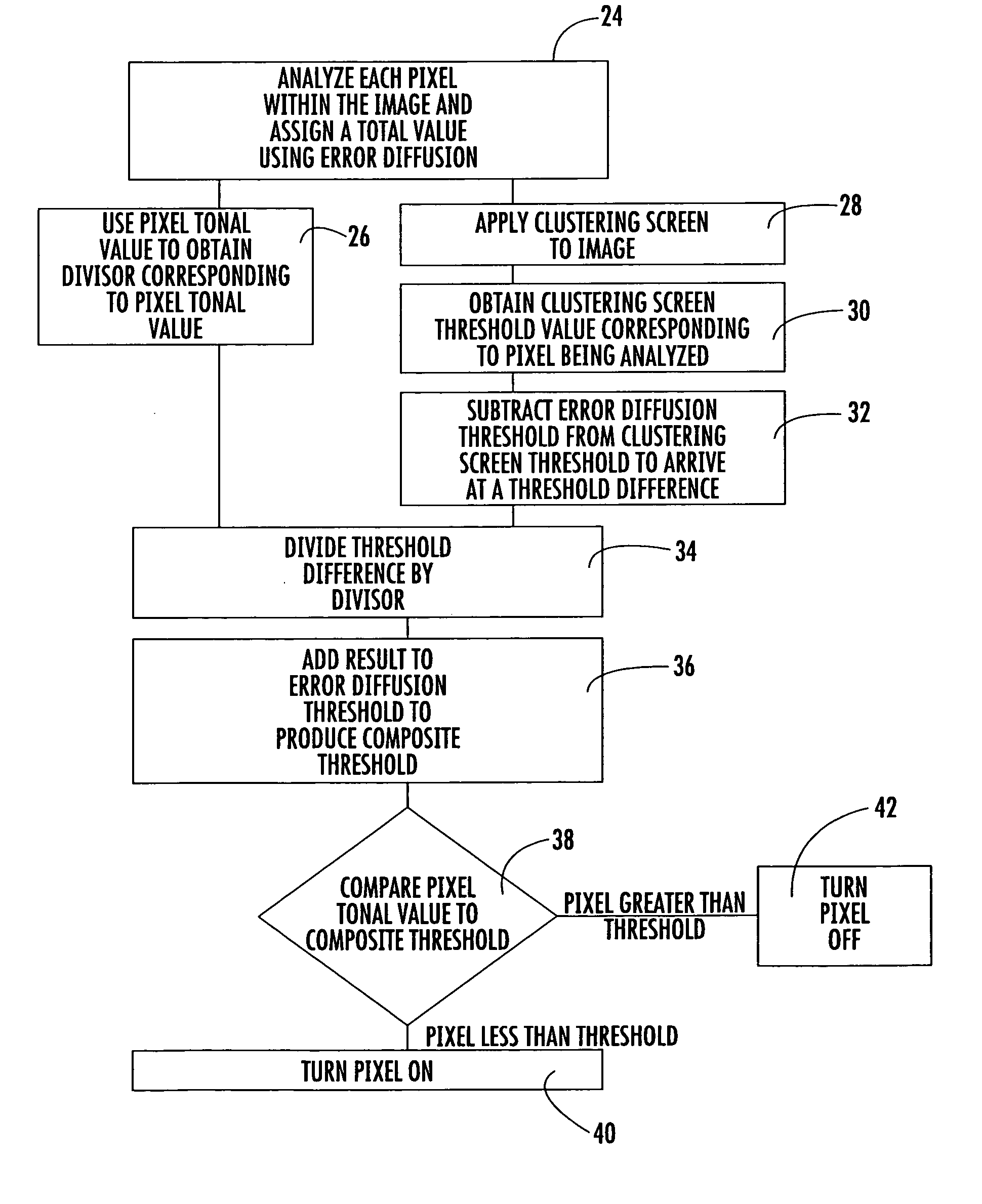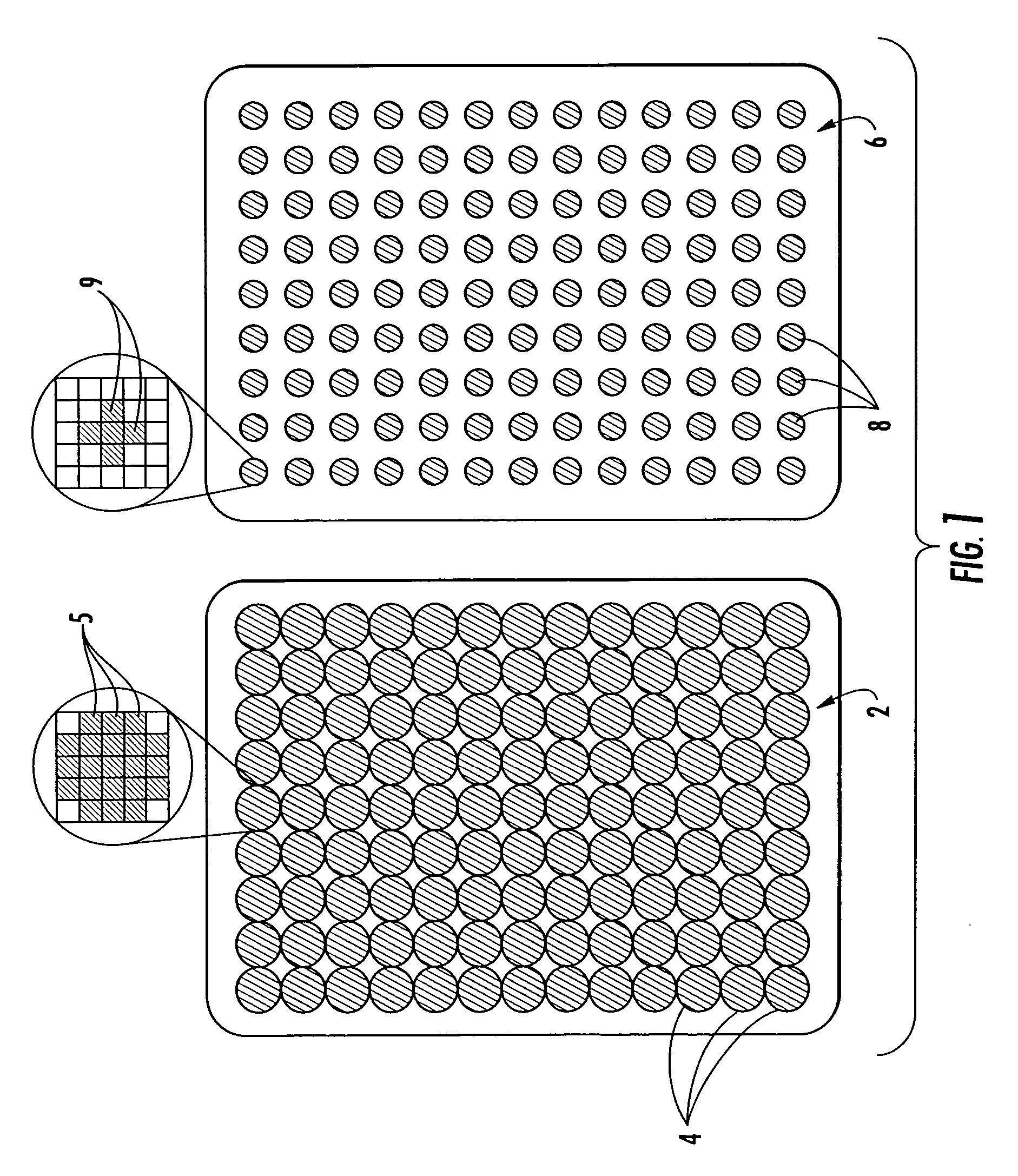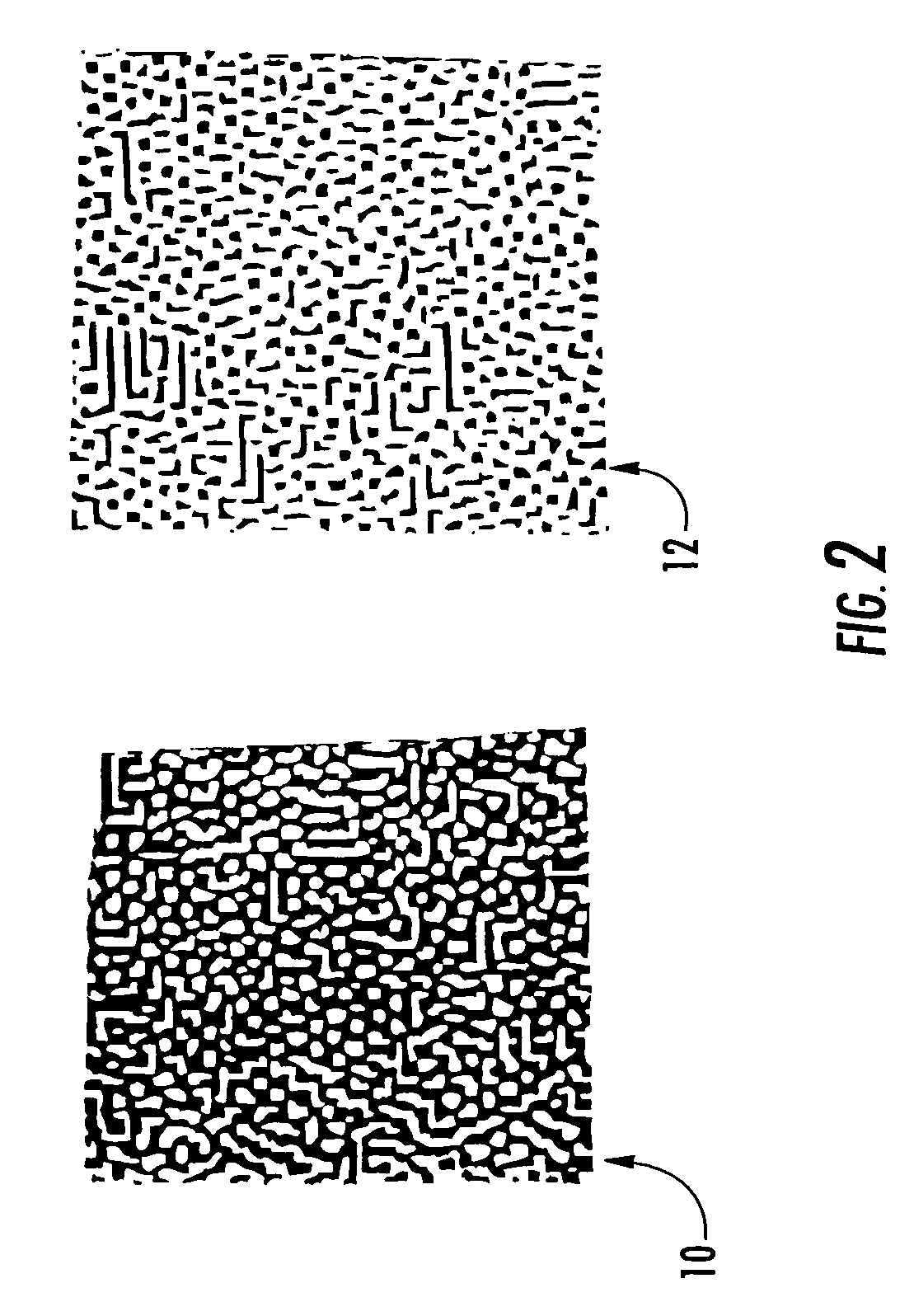Algorithm for controlling half toning process
a technology of half toning and process, applied in the field of algorithm for controlling a half toning process, can solve the problems of complex process, lower effective output resolution, and staircase effect, and achieve the effects of reducing or eliminating clustering effect, greatly improving printed output, and smooth rendering
- Summary
- Abstract
- Description
- Claims
- Application Information
AI Technical Summary
Benefits of technology
Problems solved by technology
Method used
Image
Examples
example 1
[0030] Image pixel tonal value=20
[0031] Clustering screen threshold value=69
[0032] Error diffusion threshold=127
[0033] 1) Pixel is analyzed using error diffusion. The error diffusion difference between 20 and 127 is distributed to neighboring pixels using the error diffusion rules.
[0034] 2) Error diffusion threshold (127) is subtracted from clustering threshold (69) to produce threshold difference: 69−127=−58
[0035] 3) Obtain divisor based on pixel tonal value (20). Divisor=1.39
[0036] 4) Divide threshold difference (−58) by divisor (1.39): −58 / 1.39=−41.73
[0037] 5) Add result (−41.73) to error diffusion threshold (127) to produce composite threshold: 127+−41.73=85.27
[0038] 6) Pixel tonal value (20) is compared to composite threshold (85). Pixel tonal value is lower so the corresponding physical dot is turned ON
example 2
[0039] Image pixel tonal value=140
[0040] Clustering screen threshold value=110
[0041] Error diffusion threshold=127
[0042] 1) Pixel is analyzed using error diffusion. The error diffusion difference between 140 and 127 is distributed to neighboring pixels using the error diffusion rules.
[0043] 2) Error diffusion threshold (127) is subtracted from clustering threshold (110) to produce threshold difference: 110−127=−17
[0044] 3) Obtain divisor based on pixel tonal value (140). Divisor=3.74
[0045] 4) Divide threshold difference (−17) by divisor (3.74): −17 / 3.74=−4.55
[0046] 5) Add result (−4.55) to error diffusion threshold (127) to produce composite threshold: 127+−4.55=122.45
[0047] 6) Pixel tonal value (140) is compared to composite threshold (122). Pixel tonal value is higher so the corresponding physical dot is turned OFF
[0048] The process of the present invention, wherein the pixels within each region being processed is evaluated to assign a tonal value to the region, a numeric...
PUM
 Login to View More
Login to View More Abstract
Description
Claims
Application Information
 Login to View More
Login to View More - R&D
- Intellectual Property
- Life Sciences
- Materials
- Tech Scout
- Unparalleled Data Quality
- Higher Quality Content
- 60% Fewer Hallucinations
Browse by: Latest US Patents, China's latest patents, Technical Efficacy Thesaurus, Application Domain, Technology Topic, Popular Technical Reports.
© 2025 PatSnap. All rights reserved.Legal|Privacy policy|Modern Slavery Act Transparency Statement|Sitemap|About US| Contact US: help@patsnap.com



